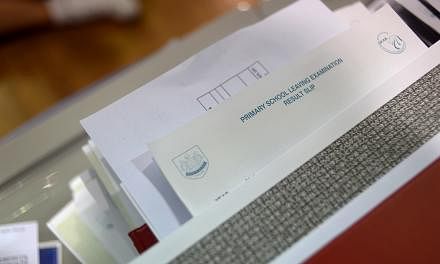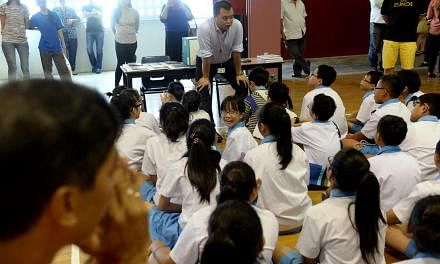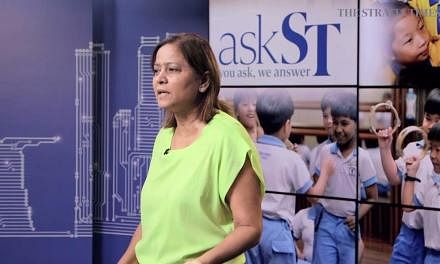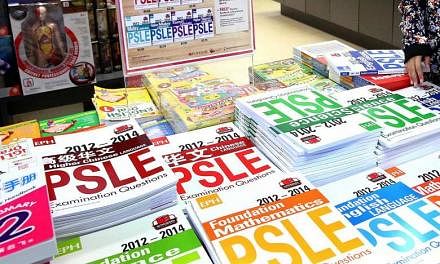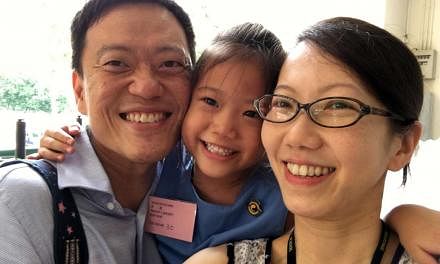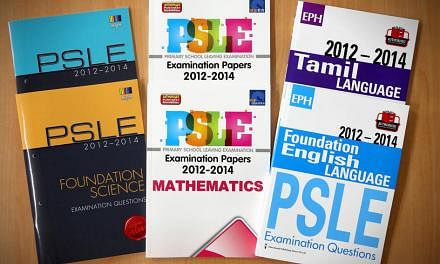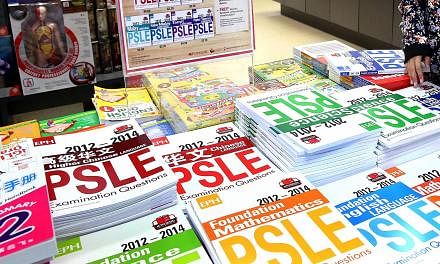The introduction of eight scoring bands for the PSLE from 2021 has left some parents worried.
They fear that children who struggle academically or face learning difficulties like dyslexia could be less motivated to push themselves.
The problem, they say, is how the bands, called Achievement Levels (ALs), are set up.
Those who score 90 marks or above for a subject will earn an AL1, 85 to 89 will be an AL2, and 80 to 84 is AL3, and so on. But the bands are broader at the bottom. AL5 is a score of 65 to 74, while 45 to 64 is AL6.
While five marks at the higher ALs is enough to fall into a better band in the Primary School Leaving Examination (PSLE), a 10-mark gain at the lower range may still see a pupil end up within the same AL band.
-
Key exam changes
-
FROM 2021
•Each subject will be graded according to Achievement Levels 1 to 8. The PSLE score will be the sum of ALs for English, maths, science and mother tongue. The best score will be 4, and the lowest 32.
•The bands: AL1 - 90 and up AL2 - 85 to 89 AL3 - 80 to 84 AL4 - 75 to 79 AL5 - 65 to 74 AL6 - 45 to 64 AL7 - 20 to 44 AL8 - below 20
•How well a pupil does will not be judged in comparison with peers. A pupil's raw performance will be reflected regardless of how his peers have done.
•Places will be allocated according to PSLE score first, but a pupil who puts a school higher in his list of choices will get priority over another with the same score who ranks the school lower.
NOW
Pupils get an aggregate score for the PSLE. It is the sum of the T-scores in all four subjects. The T-score, short for "transformed score", is an adjusted score that shows how well a pupil does relative to his peers.
Pupils also receive grades of A*, A, B, C, D, E and U.
A pupil with a better aggregate score will be given priority in his selected school.
Between two Singapore citizens, the one with the higher unrounded aggregate score - which extends to decimal points - will be admitted first.
If there is still a tie, then posting will be determined by a computerised ballot.
Some parents wonder if this will also discourage teachers from putting in the extra effort for these pupils.
However, schools assure such parents that this will not happen. Under the current system, every mark a child gains means a higher T-score.
Housewife Ho Peiling, 35, who has a four-year-old son, says weaker pupils will have to put in more effort to jump to the next higher band under the new scoring system.
"Even if they work as hard to get, say, 10 more marks, they are most probably going to end up in the same band," she says. "For better pupils, they can move up two bands if they get 10 more marks."
Administrative manager Jenny Subramaniam, 41, who has a five-year-old daughter, says: "Some pupils may think they might as well not try."
Financial adviser Joyce Lim, 46, whose son is in Primary 1 this year, says the new bands appear to be unfair to those who struggle with their academic work.
"It can be demoralising for these children, and their parents," says Madam Lim, who has two other sons aged 13 and 18.
The O-level examinations also use scoring bands but these are mostly divided into bands of five marks, except for the highest grade of A1, which is from 75 to 100 marks, and the lowest grade of F9, which is from zero to 39.
Education experts and psychologists have mixed views when asked if pupils who score within the middle to lower ALs would be less motivated to work harder. Assistant Professor Ryan Hong, from the National University of Singapore's (NUS) psychology department, says there is a risk that "some children will see the wider grade bands as a hurdle". And this could affect their motivation, he adds.
EduGrove Mandarin Enrichment Centre managing director Jerry Theseira says "the incentive for higher-ability students to do better is much greater than for others".
NUS education economics lecturer Kelvin Seah says that some pupils, particularly in the middle AL6 group of between 45 and 64 marks, would feel that they are at a disadvantage. However, he does not think that this will make them less motivated. "Most just want to do their best," he says.
The Education Ministry (MOE) says the upper bands are narrower as the majority of pupils do well for the PSLE.
On average, about half of a cohort tends to score AL4 or better.
Narrower bands at the top will help to differentiate pupils at those levels, while the wider middle to lower bands are "sufficient to give a good indication of a student's progress, and further differentiation is less educationally meaningful", says MOE.
Principals and teachers The Sunday Times spoke to say they are focused on helping pupils achieve their best, regardless of the scoring band they fall under.
Mrs Wee-Kwan Liam, principal of Waterway Primary School, says teachers assigned to teach weaker pupils are "usually specially selected", and are very experienced and nurturing. The pupils are also placed in smaller classes so that they can receive more individualised attention.
Chongzheng Primary principal Audrey Wong says learning should not be driven solely by marks.
"We can push a child to the next band, but he may find it challenging to cope in the course he is assigned to in secondary school," Ms Wong says.
"This may affect his morale in the long run. As educators, we need to understand our children's abilities and know when to push and when not to," she adds.
Damai Primary principal Lay See Neufeld says the range of marks for the ALs is based on "professionally set standards, which are deemed to be educationally meaningful differentiation for the students".
"We see this as enabling teachers to better guide the students when they progress to secondary schools," she adds. "The larger bands at the lower levels are sufficient to give a good indication of the student's progress."
Many experts and educators agree that it is important for parents to realise that the PSLE is not an end in itself, but simply part of the journey of learning.
Dr Timothy Chan, director of SIM Global Education's academic division, says whether pupils will be demotivated or not all boils down to how society treats them.
"If we embrace talents of different forms, be it creative or sports, less academically inclined kids will know that there is more than one way to succeed in life," he says.
"What we can do is to create more ladders and bridges in our education system for these kids to develop, according to their strengths."
Edufront Learning Centre principal Yang Iskandar says that even if weaker pupils are unable to move up a band at the PSLE, "they can always catch up at the secondary and post-secondary stages and later on in life".
He says: "I have seen many cases of students who underperform at the PSLE but go on to excel at secondary school and beyond."



